By Sophie Fletcher, Author of “Mindful Hypnobirthing” and “Mindful Mamma, the first year”.
Instagram: @sophiefletcher_author

The differences in Hypnosis and mindfulness for Birth
Recently Instagram, Facebook and Twitter have been awash with hypnobirthing teachers talking about hypnosis and mindfulness for birth. Usually in the same breath. So what are you actually getting when you do a hypnobirthing course – hypnosis, or mindfulness, for birth? Are they the same or are they different. Are they interchangeable? For anyone who understands the two, the correct answer to that question is a big resounding “NO”!
Mindful is a buzz word at the moment, and if you are not trained in hypnotherapy and understand the nuances, then yes, it may feel very similar. But it’s not.
14 years ago, as a mother who had just had children herself, and used hypnobirthing, I was curious to know about the subtle differences. First training as a hypnotherapist, I explored many different approaches to hypnosis for birth, including Mongan. None of them were for me, so I explored different aspects of childbirth preparation – including cognitive behavioural approaches and pure hypnosis, finally, ending up on retreat and exploring mindfulness.

The two are very different and this is why.
Hypnobirthing is based on hypnosis. Whatever people say, as a hypnotherapist, I can say with confidence that you will be hypnotised as part of hypnobirthing and you will go into a deep hypnotic relaxation if you are listening to mp3s. That’s ok, it feels incredible and contrary to what most people think, YOU are always in control.
With hypnosis, you are seeking to change a behaviour, a belief, or a feeling. If you think negatively about birth, you will learn techniques to think positively about birth. You’ll learn powerful techniques to switch sensations off, or to change them, using visualisations, imagery and language.
The most important thing to remember about hypnosis for birth, is that it’s about change.
Breathing example: When you learn to breathe for birth, you are directed to breathe in a certain way. Usually a different way to how you usually breathe.
Mindfulness is more about connection. When you approach your baby’s birth with mindfulness you don’t try to change or alter your experience through visualisation and imagery. Instead, you bear witness to it, you notice the feeling arising in your body and pay attention to it. Instead of distracting yourself by using a hypnosis distraction technique you connect with it deeply, noticing your feelings as they arise, physically and emotionally.
The most important thing to remember about mindfulness is that you choose to notice rather than actively change.
Breathing example: Instead of learning how to breathe in a different way, you just notice your breath. Paying attention to it. Observing where you are breathing, how you are breathing, there are no suggestions for you to experience in a way other than how it is, in that moment.
Mindfulness and Hypnosis for birth = Mindful Hypnobirthing
So how do they come together? I explore this more in my book Mindful Hypnobirthing because for me there is a very clear distinction. Hypnosis is very much about the preparation, clearing fear and anxiety. Essentially this is de-hypnotising you from how you may have been negatively conditioned, through the media.
You can also learn some really great tools, but only if you need them. Thinking you can’t birth without your tools or getting worried they won’t work defeats the purpose. The aim of a good hypnobirthing class should be to get you to a place that you know YOU can do it. Whatever happens. Not the tools, not the scripts, not the MP3s. YOU.
Hypnosis tools are useful if for any reason you feel yourself becoming more alert, fear is creeping in or you are feeling more anxious. It can help you get back into your birthing zone. I use this image to explain this.

The truth is that every single woman, whether they have done hypnobirthing or not, has access to a mindful space during birth. Her Birthing Zone. Birth itself can be an exercise in mindfulness. Your brain and body has been honed over thousands of years for this.
When you allow yourself to let go of cultural conditioning and give birth without fear, you can access something deep within you. Something primal, strong and supremely able. You are able to open up to a flood of oxytocin and beta-endorphins. You are able to connect with and accept your strength in its loudest voice or its quietest breath, meeting your contraction waves as they rise to meet you.
You can be aware of your body, connecting with, and recognising, the shifts and transitions during birth. And the most wonderful thing? When you connect to any discomfort and really see it for what it is, something happens. It becomes more comfortable.

Mindful Hypnobirthing – Where the magic happens
When I combined the two in this way, something magical happened. Fewer women were saying they failed at hypnobirthing, and the flexibility of the tools enabled couples to adapt their plans when things change, while still feeling in control of their choices. The focus is definitely on positive experiences.
It’s empowering – rather than using tools as a crutch worried they wouldn’t work, women started to feel that they were able to do it. Sometimes a feeling of lightness is described as unconscious thoughts shift to a place of “can do”. The course is enabling. The couples are encouraged to understand the theory of how the tools work, the evidence around self-belief and birth, and to make the practice personal to them. True of all hypnosis, this is when it works better.
During the birth mindfulness can help you connect with your breath, your movement, your physical experiences, as you go deeper into those small moments, you become a witness to the incredible nature of your biology, your strength and your love. As you turn inwards time alters, and you unfold tenderly and powerfully in the moments between moments.
Making Choices
And this is where it can really win out. If you have a choice, if things diverge from your chosen path, there is a time for acceptance and re-assessment. Acceptance is not a passive act, it’s a very proactive choice to connect with and understand what is happening, to notice your feelings around it.
When we are shunted into something unexpected it can trigger fight or flight which means brain fog. Personally, I think pre-conditioned hypnosis tools win over here and can help you counteract this, getting you into a headspace where the fog lifts and you have clarity of thought. This then switches back into mindfulness and acceptance. From this any decisions made, are decisions thought through, discussed, they are become decision owned and understood.
This brilliant diagram from Guinevere Webster – in the revised version of Mindful Hypnobirthing, shows how this can work.
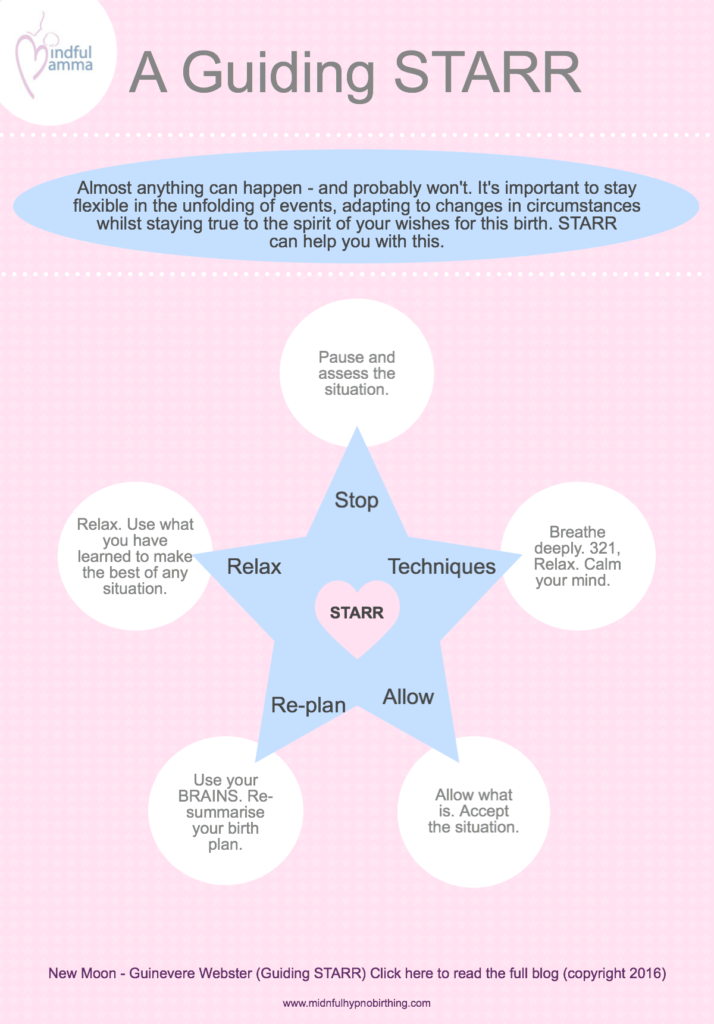
Birth partner
Mindfulness is also brilliant for birth partners. Whether it’s bearing witness to their own feelings, exercises that help them to stay present, and learning about compassionate partnering during birth.
Know the difference!
Next time someone says that hypnobirthing is taking a mindful approach to birth, ask what the mindfulness element is. What is the philosophy behind the course and what are the differences in how mindfulness and hypnosis are taught? Hypnosis isn’t just relaxation, neither is mindfulness and it’s definitely not hypnosis!
I wish I’d had the opportunity to explore the ways in which both could help me when I gave birth, as in my experience as a doula and teacher it unlocks something special. A connection to, and understanding of your body, that few experiences can.
You can read Mindful Hypnobirthing and Mindful Mamma to learn how hypnosis and mindfulness can help you.
Buy Mindful Mamma, the first year.
You can book a class here or read more about Mindful Hypnobirthing here.
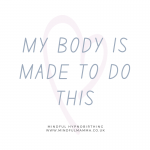
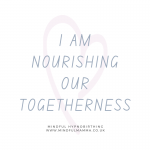




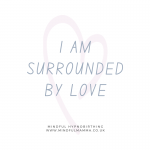


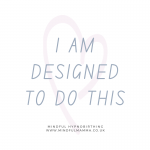
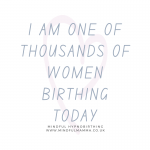
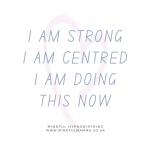
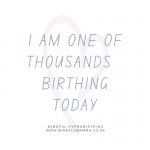



Leave a Reply